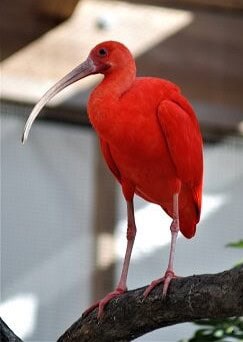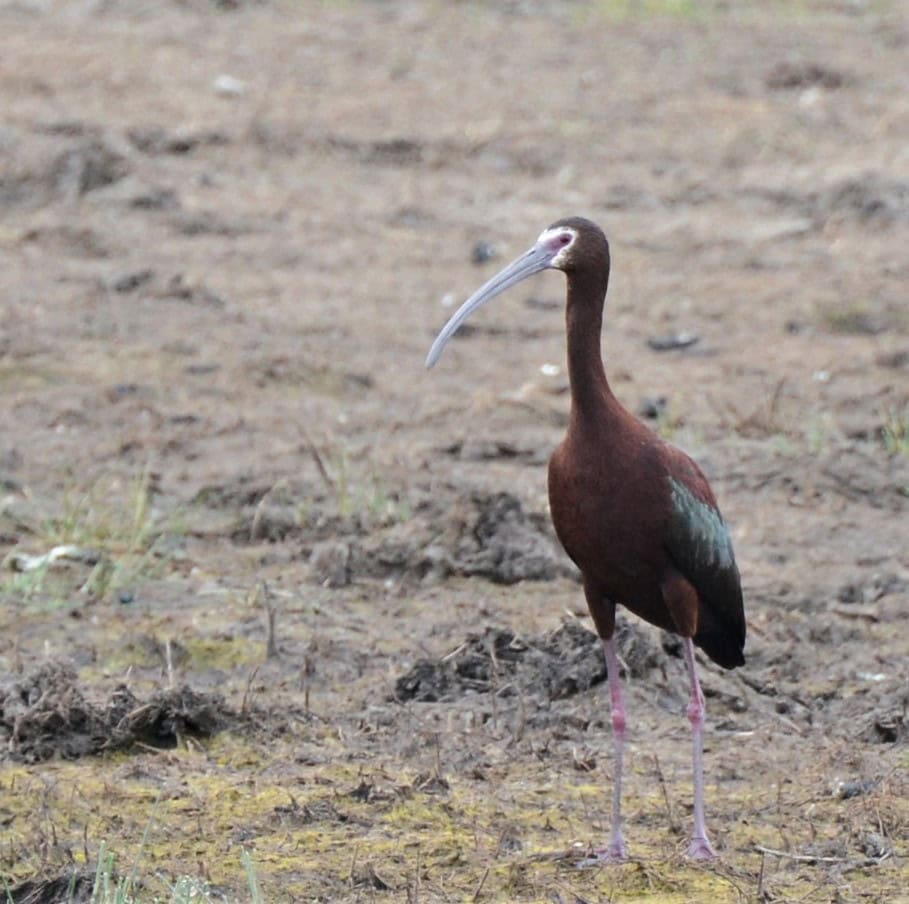
What is an Ibis
The Ibis is a family of birds with the scientific name of Threskiornithidae. They have a beautiful body, long legs, a strange-looking, long, downward-curved bill together with a bald, ugly head, this makes them a bit of a freak of nature. (Spoonbills are in the same family as Ibises)
Ibises are traditionally wading birds. Therefore, they have long legs and long bills. They hunt in shallow water for crayfish, crabs, frogs, snails and small fish. The long, curved bill is swept from side to side, searching for things they cannot see in murky water. In addition, they can also be seen probing on land for insects, worms and just about anything edible that they can find. They often feed as a group.
Ibises are monogamous and nest in trees.
29 Species
There are 28 species of Ibises plus four extinct species. The extinct Ibises were flightless birds from Hawaii, Jamaica and Reunion Island. Flightless birds have not fared well since the Europeans began travelling around the globe. Except for penguins, most flightless birds are either extinct or rare.
Africa

African Sacred Ibis – Found in sub-Saharan Africa and Iraq and introduced in Europe. It was a sacred bird in Egyptian mythology. The Egyptian god, Thoth, was the god of writing, mathematics, the moon and magic. He had the body of a man and the head of an Ibis. Poor guy! Furthermore, Ibises were sometimes used as special sacrifices to the gods and mummified and buried with important people. They no longer exist in North Africa.
Madagascar Ibis – Endangered. Endemic to Madagascar.
Malagasy Sacred Ibis –Endangered. Endemic to Madagascar and Aldabra Atol in the Indian Ocdan.
Northern Bald Ibis – Endangered. Once widespread across north Africa, the Middle East and Europe, they are now found only in Morocco, Spain, Germany, Switzerland, Slovenia, Croatia, and a couple other small spots in central Europe, plus a very small number in the Middle East.
Southern Bald Ibis –Vulnerable. Found only in eastern South Africa, Swaziland and Lesotho.
Olive Ibis – Forest Dwelling. Small, spotty range across central Africa.
Sao Tome Ibis – Critically Endangered. Found only on the island nation of Sao Tome and Principe in the Gulf of Guinea off the coast of Gabon.. The population is somewhere between 50 and 250 birds.
Spot-breasted Ibis– Found in the forests of Central Africa.
Hadada Ibis – Sub-Saharan Africa
Wattled Ibis – Found only in Ethiopia and Eritrea.
Asia
Black-headed Ibis – Near-threatened. India and SE Asia.
Red-naped Ibis – India and a bit into bordering countries.
Giant Ibis – Critically endangered. Found only along the border of Cambodia and Laos. Total population is less than 500 birds.
White-shouldered Ibis – Critically endangered. Found mostly in Cambodia with a small number in Vietnam, and Indonesia. Population estimated range from 250 to 450 birds.
Crested Ibis – Endangered. This bird was once common across Japan, China, Korea, Taiwan and eastern Russia. They were thought to be extirpated in China until a tiny group of seven were found in the central Chinese province of Shaanxi in 1981. That same year, the last five birds in Japan were taken in captivity. A few captive-bred birds were released in Japan in 2008. These birds have managed to survive and breed but have not yet achieved a self-sustaining population. It is also known as the Japanese Crested Ibis although most of the surviving birds live in China, A few birds were reintroduced in South Korea in 2008. The population is now about 1,000 birds.
North and South America
White Ibis – Found from northeast USA, through the Caribbean and Central America to Ecuador.

Scarlet Ibis – Found along the north coast of South American and also the southwest coast of Brazli as well as the islands Puerto Rico and Aruba, Curacao and Trinidad & Tobago.
Buff-necked – North and Central South America.
Black-faced – Peru, Chile, Argentina and the Falkland Islands. Although other species of Ibis have black heads, the Black-faced Ibis has a brown head with black only around the eyes.
Sharp-tailed – Columbia, Venezuela and a little bit into Brazil.
Green Ibis – Nicaragua to Brazil. it is a bronzy, iridescent green colour.
Bare-faced – North and central South America and a tiny bit into Panama. Although most Ibises are bare-faced, this one has it for a name.
Plumbeous Ibis – Central South America. Plumbeous means grey.

White-faced – Can be seen from southwest Canada to Central America in summer and in southern South America in winter. The White-faced Ibis is brown and bronze-green in winter. In summer, while in breeding plumage, they become more of a reddish-brown with a white face. The face is the same colour as the body when in winter plumage.
Puna Ibis – Found in the Andes Mountains from Ecuador to northern Chile.
Andean Ibis – Near Threatened Found in the Andes Mountains from Ecuador to Bolivia and northern Chile
Australasia
Australian Ibis – Found in Australia, Papua-New Guinea, Solomon Islands and a bit of Indonesia. Most Ibises are wary of humans; however, in some parts of Australia, they have overcome their fear of people and have become somewhat of a pest. They can be found in garbage dumps, city parks and residential areas.
Straw-necked Ibis – Found in Australia, Papua-New Guinea and West Papua, Indonesia. Except for the head and neck, they are an iridescent blue, purple, gold and green colour
Worldwide
Glossy Ibis – Can be seen worldwide from southwest U.S.A to Australia, including Africa, India and other places. The most common species of Ibis.
Extinct Ibis
Reunion Ibis – Extinct. Limited flight capabilities. Formerly endemic to Reunion Island in the Indian Ocean.
Jamaican Ibis – Extinct. Flightless. Formerly endemic to the island of Jamaica.
Moloka’i Ibis – Extinct. Flightless. Formerly endemic to Hawaii.
Maui Ibis – Extinct. Flightless. Formerly endemic to Hawaii.
Immature Ibis
Young Ibis can be challenging to identify as they may look quite different from adults. The photo above is of an American White Ibis.






Cuanta variedad de Ibis… 😯